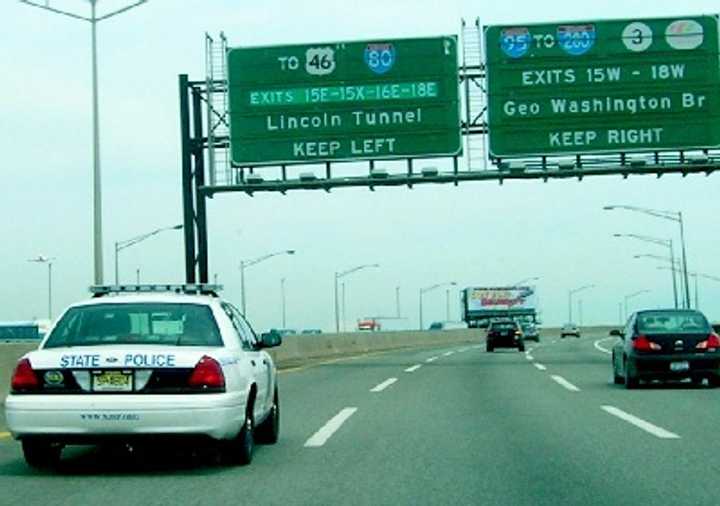CLIFFVIEW PILOT photo
New auto-safety features helped bring the number of people killed in New Jersey motor-vehicle crashes last year to 556, which Hillsdale Police Chief Chip Stalter said “marks the lowest number in the state since the 1940s,” despite a huge boost in the number of miles driven.
But it’s personal choices that can save the most lives – including your own. Even the simplest or quickest of texts or phone calls, or a glance at yourself in the mirror, could make the difference.
That’s one of the messages of “Put the Brakes on Fatalities Day,” which aims to make drivers more aware of how they can prevent and avoid fatal accidents.
The objective is to have a day nationwide when no one is killed in a crash. The chances of that happening are near-impossible, given that, on average, someone in the U.S. dies in a crash every 15 minutes. But that doesn’t mean deaths cannot be avoided – especially if people consciously decide to consider the consequences of how they drive.
“Important initiatives like Put the Brakes on Fatalities Day will undoubtedly raise driver awareness and encourage a change from dangerous driver behaviors that contribute to fatal motor vehicle accidents,” said Col. Rick Fuentes, superintendent of the New Jersey State Police. “Only by changing dangerous and irresponsible driving behavior can New Jersey reach the ultimate goal of a fatality free year.”
Since 2005, fatalities nationwide have dropped 25 percent, from a total of 43,510 in 2005 to 32,788 last year, according to the National Highway Traffic Safety Administration (NHTSA). This comes despite an estimated increase of nearly 21 billion miles in national vehicle miles traveled.
Electronic stability control, forward collision warning and lane departure warning systems have all helped make that happen – as have rumble strips, cable medians and other advances.
However, authorities say the annual awareness campaign – which began in 2001 — has brought attention to the benefits of buckling up for EVERY ride, doing the limit, staying sober and avoiding ALL distractions, including texting, GPS devices and everything else people try to do when they should be paying attention to what’s ahead.
The best way to pursue the goal, Stalter said, is one town at a time. So he’s encouraging residents of his town to do their part. Chiefs elsewhere are doing the same.
“As always, Hillsdale’s police officers will be on patrol to warn and/or cite drivers who commit traffic violations that jeopardize safety,” Stalter said.
To help the cause, police departments will report tomorrow’s crash information, including the total number, those involving injuries and those that kill, to the Division of Highway Traffic Safety, the state’s lead traffic safety agency.
The division will post the information on its website and distribute it to the media.
It’s like “The Great American Smokeout,” only with blue uniforms.
“Clearly, this effort will go a long way in our continuing efforts to stem the tide of tragedies that occur every day on New Jersey’s roadways,” Fair Lawn Chief Eric Rose said. “Shining the spotlight on this one day can help create a groundswell of support for good driving behaviors that can carry over throughout the year.”
IMPORTANT TIPS:
ALWAYS buckle up, no matter where or how far you’re going.
Understand that driving while impaired doesn’t always involve alcohol. Reconsider your mode and method of travel if you are taking ANY kind of medication, be it prescribed or over the counter.
Keep a safe distance. It’s the unexpected that holds the most danger.
Remember: Blind spots and areas around trucks and buses carry constant danger. DO NOT try and squeeze between a large vehicle and other cars.
Avoid cutting in front of anyone, suddenly speeding up, frequent lane changes and tailgating. You never know how others are going to react, especially in heavy traffic. Someone ahead might suddenly hit their brakes, or someone behind could get rammed.
The split-second you divert to a cellphone, GPS or anything other than what’s directly in front of you could be the instant you need to make a decision that could change your or someone else’s life.
Don’t ever hesitate to call police if you see trouble. That can be either dangerous driver or a road problem that someone may not yet have noticed. Police appreciate the help.
And pedestrians: Never, ever assume that a driver sees you. Be careful crossing streets, even at clearly marked intersections – that’s where many fatal accidents occur.
More info: brakesonfatalities.org or fairlawnpd.com
CLIFFVIEW PILOT ADVISORY: Independence is important to the elderly, and no one wants to take that from them. But please consider whether your parents, grandparents or other loved ones have reached the point of being too old to drive. Nature itself dictates that reaction times slow as you age, particularly in your senior years. Now consider the number of elderly drivers you have seen barreling down a highway. The rest of us have trouble enough negotiating the sudden surprises that pop up as we drive. Consider the potential for an elderly person behind the wheel of a two-ton vehicle.
For further proof, see: Elderly driver’s car flies off 2nd-floor parking deck
{loadposition log}
Click here to follow Daily Voice Pascack Valley and receive free news updates.
